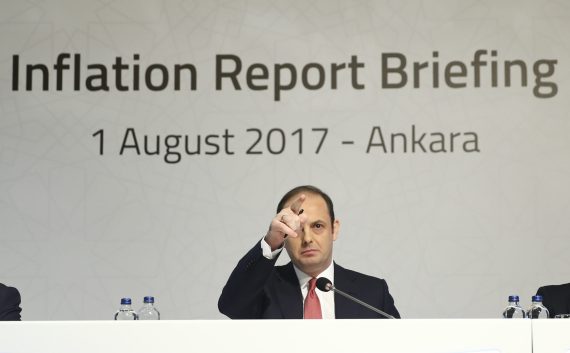In my previous column, I touched upon how neoliberalism and the financialization of the globe have rendered countries around the world susceptible to the caprices of the financial industry. Because of the pervasive influence of the financial industry, many developing countries including Turkey have found themselves in the last two to four decades unable to pursue a growth – and development – conducive monetary policy regime, which features a low policy interest rate and an undervalued exchange rate.
Two main developments, namely global liquidity abundance and unnecessarily strict monetary policy on the part of the Turkish Central Bank (TCMB), have accentuated wrong type of monetary policy in Turkey, which features a high policy interest rate and overvalued exchange rate regime in the 2000s. Between 2002 and 2008, the real interest rate hovered well above a staggering 10 percent for the most part. Only with the onset of the global financial crisis, TCMB lowered policy interest rate, albeit very slowly, and hence eased its monetary policy stance. However, the nature of the monetary policy regime did not change and once Turkey recovered from the crisis amid fears of the overheating of the Turkish economy in the 2010-2011 period, TCMB tightened its monetary policy stance too fast and too much, though resulting in not as pronounced a tight monetary policy as before the crisis, one should note.
Since then, TCMB has pursued a (somewhat) strict monetary policy as before purportedly with a view to decreasing the inflation rate, which has already been in moderate levels, but to no avail. This should not come as a surprise, because the Turkish inflation rate experience between 2004-2018 has shown that policy interest rate and real interest rate have had no (negative) discernable effect on the inflation rate. For example, when the real interest rate was 11.8 percent on average between May 2006 and November 2008, the inflation rate averaged out 9.75 percent, surpassing the long-term inflation rate in the 2000s significantly. On the other hand, between 2011 and 2013, real interest rates were well below 10 percent and the average inflation rate was around 7.6 percent, somewhat below long-term average.
Recommended
Unlike “official monetary policy understanding in the world” and as Post-Keynesian economists advocate, inflation results mostly from cost-push factors, not demand-pull ones, and the Turkish experience in the 2000s attests that clearly as shown in an empirical paper in a refereed-journal by TCMB itself. According to the study, half of the inflation in the period of 2006-2016 in Turkey cannot be explained at all, and more than 90 percent of the other half has not been demand-driven, but cost-driven, which is agonizingly at odds with the “weak” theoretical fundamentals on which TCMB constructs its “strict” monetary policy stance.
All in all, the TCMB purportedly has long been trying to contain the inflation rate by a strict monetary policy regime in Turkey, only to no avail on the part of inflation rate, and – unfortunately to the detriment of the Turkish economy and “common people.” The whole “strict” monetary policy stance in the 2000s has debilitated the real economy in favor of the financial industry, hence the deindustrialization of Turkey. Of course, not to mention the aggravated income inequality emanated from this monetary policy regime. One should add that the same deindustrialization process happened in developing countries such as Brazil in the 2000s. Then, time is more than ripe for the TCMB to reconsider its monetary policy stance and take into account real factors such as employment, economic growth, income inequality and, last but not least, the development process of the country when constructing monetary policy function. After all, central banks are for the people, right?





